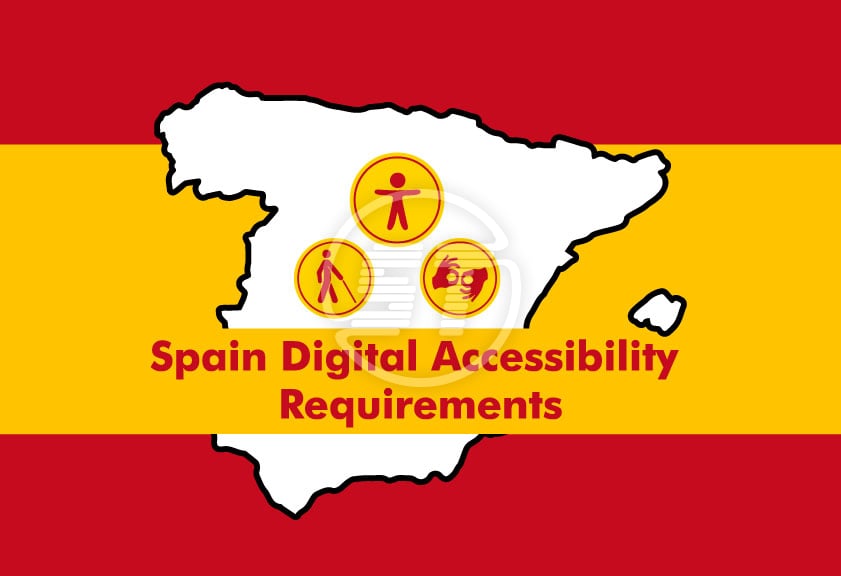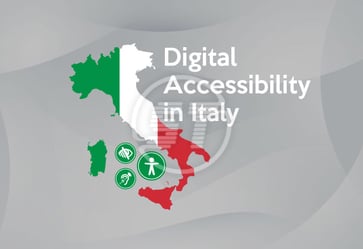Ensuring accessibility for individuals with disabilities in accessing the internet is paramount in fostering an inclusive society. The Internet plays a pivotal role in various spheres of life, including education, healthcare, employment, public administration, and more. Hence, websites should be designed and developed to be universally accessible, accommodating diverse users regardless of their physical or mental capabilities and the devices they use for access. This commitment to accessibility aligns with the principles of fairness and equality, ensuring that every individual, irrespective of their circumstances, can access information and available resources on equal terms. UNE 139803:2012 accomplishes this in Spain. This article will delve into various aspects of UNE 139803:2012, its guidelines, and its requirements. Continue reading to know more about it.
What are Digital Accessibility Requirements in Spain?
UNE 139803:2012 is a Spanish standard developed by the Spanish Association for Standardization and Certification (AENOR) to address web accessibility requirements. Evolving from its inception as a standard for 'Computer Applications for People with Disabilities' in 2004, this regulation replaced the earlier UNE standard 139803:2004. It was established in 2012 to ensure that web content is accessible to individuals with various disabilities, including auditory, speech, visual, physical, cognitive, language, learning, and neurological impairments. The standard seeks to promote easy navigation and comprehension for all users, irrespective of their technical expertise or disabilities. It aligns with the AA compliance level of the Web Content Accessibility Guidelines 2.0 (WCAG 2.0) and covers information available across the internet, intranets, and computer networks, emphasizing inclusivity for people with disabilities and the elderly to ensure autonomous navigation or usage with assistive technologies. UNE 139803:2012 is part of a set of standards, including UNE 139801 for hardware accessibility and UNE 139802 for software accessibility, cited in Royal Decree 1494/2007, outlining conditions for access to information society technologies for people with disabilities.
Applicable to government and government-funded entities, companies with over 100 employees, those with a substantial trading volume exceeding 6 million Euros, and organizations providing financial, utility, travel, passenger, or retail services online, the standard sets forth accessibility criteria for web content. Non-compliance with these accessibility guidelines can lead to legal consequences, prompting adherence to specified accessibility levels as outlined in the standard. The enhanced awareness and understanding of accessibility among stakeholders, noted by the Spanish Committee of Representatives of Persons with Disabilities (CERMI), signal a progressive movement towards more comprehensive accessibility legislation backed by a robust disability community in Spain.
YOU MAY ALSO LIKE: Importance of Digital Accessibility
What are website content accessibility guidelines (WCAG) 2.1?
The Web Content Accessibility Guidelines (WCAG) 2.1 represents the iteration of recommendations by the World Wide Web Consortium (W3C) regarding web accessibility standards. Aligned with WCAG 2.1, the standard EN 301-549 v2.1.2 (2018-08) incorporates changes introduced in the latest version, encompassing new conformity criteria and the addition of guidelines like "2.5 Entry Modalities," among others. Note that the pre-existing conformity criteria within WCAG 2.0 remain unchanged in the updated version, maintaining their original numbering and structure.
WCAG 2.1 builds upon previous standards like WCAG 2.0, integrating enhancements and addressing newer technological factors, catering to the evolving digital landscape. It emphasizes making web content and applications more accessible for individuals with disabilities and the elderly, enabling their independent usage or navigation with the assistance of relevant technical aids. This standard's implementation complements international initiatives such as WAI-ARIA (Web Accessibility Initiative - Accessible Rich Internet Applications) and ISO/IEC 40500:2012, facilitating international harmonization across different national legislations and promoting broader accessibility guidelines for web content.
YOU MAY ALSO LIKE: Audit your website for seamless accessibility.
What are the various digital accessibility requirements?
The accessibility requirements laid out in standards like UNE-EN 301 549, and its versions delineate the functional criteria essential for ensuring the accessibility of Information and Communication Technology (ICT) products and services across various platforms such as mobile phones, computers, web pages, software, native apps, documents, and hardware. These requirements guarantee accessibility to all individuals, including those with disabilities, and are built upon the WCAG 2.1 web content accessibility guidelines, emphasizing adherence to international standards for web accessibility set by the W3C.
These standards outline the specifics for accessible functionalities and describe procedures for testing and evaluating compliance with these criteria. They address a wide spectrum of ICT products and services, ensuring that they are usable and navigable by individuals irrespective of their physical or mental capabilities. Furthermore, these standards integrate detailed evaluation methodologies, detailing how to assess and ensure adherence to each accessibility requirement.
The European Commission has recognized these standards, notably UNE-EN 301 549 v3.2.1 (2021-03) and others, as harmonized standards aligning with the Directive (EU) 2016/2102 on web accessibility, thereby endorsing their application in Spanish Public Administrations. The UNE-EN 301 549:2019 standard, as well as its previous versions, have been adopted into Spanish catalogs, ensuring their dissemination through official channels, and prohibiting unauthorized distribution.
“W3C has released the set of WCAG 2.2 web content accessibility guidelines in October 2023.”
Conclusion
In summary, web accessibility standards like UNE 139803:2012 and WCAG 2.1 underscore the importance of inclusivity. They establish vital criteria for digital content, ensuring equitable access for all individuals, including those with disabilities. These standards pave the way for an inclusive digital environment, fostering equal opportunities for diverse users within Spain's ICT landscape.
Skynet Technologies is proud W3C (World Wide Web Consortium) and IAAP (International Association of Accessibility Professionals) member and a part of the global accessibility community to stay up to date with compliance guidelines.
We are proving website ADA WCAG 2.1 and 2.2 Level A, AA, AAA remediation services, website ADA compliant audit, VPAT (Voluntary Product Accessibility Template) accessibility conformance report, accessibility document remediation, ongoing website accessibility monitoring, accessibility training, consulting, and support for enhancing accessibility compliance for international standards including Spain UNE 139803:2012. Reach out hello@skynettechnologies.com to know more.

